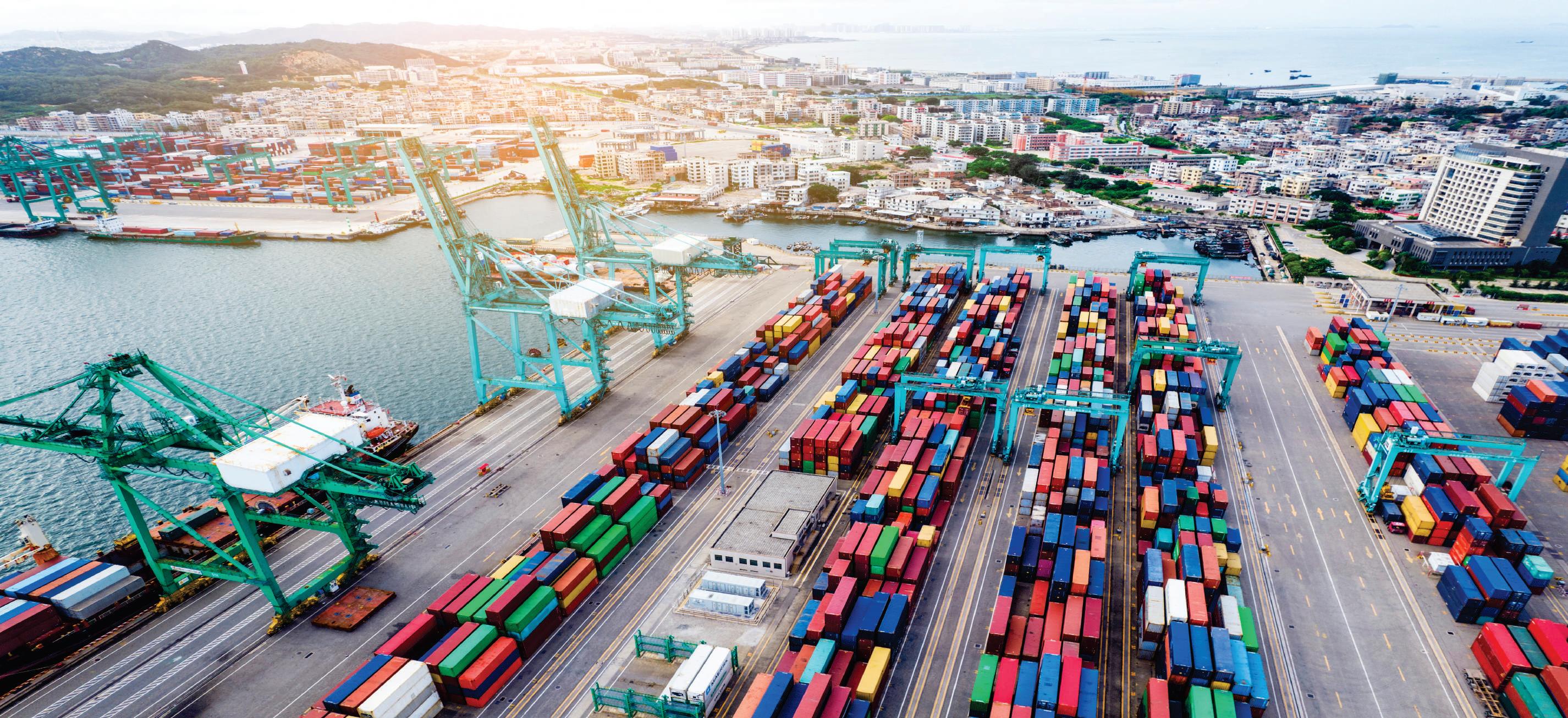
5 minute read
SURESH KALRA
[ 90 ] | INTERVIEW
Advertisement
MANAGING DIRECTOR HUBERGROUP INDIA AND HEAD OF RBU (REGIONAL BUSINESS UNIT) ASIA The company is developing products including raw materials such as radiation curing oligomers, polyesters, and polyurethane resins to further expand its chemical business
What are the global trends in the printing solutions business in 2022 and its impact on India?
Globally, the packaging market is growing in areas of rigid carton, folding carton, and flexible packaging. The market has rapidly moved towards sustainable packaging, and we can see growth in monolayer flexible laminates and paper as well as boards. Similar trends are visible in India.
There has been a decline in the publication industry (newspapers, periodicals, and magazines) globally. In India, the publication market is expected to have minimal growth due to the rising literacy level and comparatively less penetration of digital/electronic media in smaller cities.
What are the key milestones achieved by hubergroup India in FY 2021-22? Factors which will drive growth in India?
hubergroup continues to focus on developing safe and sustainable products. For example: HYDRO-X Water Barrier Coating, which was launched in 2021 and received the IFCA Star Award in the category ‘Enviro Friendly Product’.
The company has further invested in launching cobalt drier free, mineral oilfree, low migration low odour (MGA brand) products. In January 2022, hubergroup has, for instance, launched a series called MGA CONTACT, which is a sheet-fed offset ink for direct food contact.
Government bodies are moving towards more stringent regulatory norms to be in line with global guidelines. We can foresee toluene being banned over time. This will lead to more good manufacturing practices and strict compliance.
Last year, the continued Covid scenario led to global raw material shortages and disruptions in the supply chain. Thanks to its backward integration, hubergroup was able to manage its production well through its raw material production plant in India.
hubergroup's manufacturing is spread across three production sites - Silvassa, Daman, and Vapi? What is the cumulative production capacity?
hubergroup India combined production installed capacity at Vapi (two plants) is 207,000 metric tons per annum (MTPA), Silvassa is 92,800 MTPA and Daman is 25,750 MTPA.
hubergroup India produces raw materials such as pigments, resins, and additives. Annual production capacities of raw materials and key customers in these segments?
At Vapi, we produce raw materials such as resins (ketonic, polyamide, and offset resins), pigments (dry pigments and alkali blue flush & powder), concentrates and acrylates. These are both produced for the division hubergroup Print Solutions as well as sold to leading ink manufacturing companies (worldwide and regional).
Factories have production capacity of 203,000 MTPA for printing inks, 71,050 MTPA for resins and varnishes, 46,500 MTPA for pigments and flush colours, and Press Chemicals 5,000 MTPA.
INTERVIEW | [ 91 ]
As the largest producer of Alkali blue, what's your market share at the national level and how do you plan to increase it?
Alkali Blue is primarily used in the newsprint (web ink) business. This is now declining. However, as the usage of Alkali Blue is increasing in sheet-fed, we expect it to grow with the expanding packaging market.

Recently, hubergroup increased price in print solutions for all global regions. What will be its impact in the Asia region?
Price increase is inevitable as raw materials, logistics, and despatches costs have risen. This has impacted the whole printing industry as we see price increases in paper, plates, film chemicals, and also inks & adhesives.
As the market leader, hubergroup has taken the lead in increasing the prices taking the customers along by making them aware of the ground realities. Customers have taken this positively and are cooperating. There is no severe impact on business share as the entire printing industry has also increased their prices.
Considering the current situation of the market and customers, hubergroup has not yet passed on the full cost burden.
In the past, hubergroup India has innovated products such as liquid and UV inks. Going forward, the key R&D initiatives the company is planning to undertake in India?
hubergroup offers environmentally friendly, safe, and sustainable inks for packaging, both in the flexible and folding cartons segment. We have made our plants GMP compliant and had many of our products certified by the Cradle to Cradle Products Innovation Institute. Thus, hubergroup offers printing inks with full Cradle to Cradle certification for water- as well as solvent-based flexo and gravure printing as well as for offset printing. This makes the ink specialist one of the companies with the broadest portfolio of sustainable printing inks. To further expand our chemical business, hubergroup is developing products beyond the existing printing business. This includes raw materials such as radiation curing oligomers, polyesters, and polyurethane resins for the industrial coatings segment.
What is your Capex plan for FY 2022-23? What's the automation and digitalization plan across operational plants?
hubergroup India is a highly backward integrated manufacturing company with sufficient capacities to meet market demand, hence there is no major Capex planning other than routine Capex in FY 2022-23. All our plants have a high level of automation and to some good extent, are already digitized. However, hubergroup remains proactive to adopt new technologies.
CSR plans for hubergroup India in FY 2022-23?
At hubergroup, we are committed to give back to the regions where we operate. We support various community programs in and around Vapi especially in the interior rural areas where primary education has to be implemented at grass root level. The company will continue its activities in the areas of health and education by expanding its collaborations with regional NGOs, industrial associations, and government bodies.
What would be huber's strategy in Asia for the next phase of growth?
hubergroup has announced its Chemicals division to expand beyond the printing ink business. The Print Solutions division will focus even more on sustainable products for better environment and food safety.
How does hubergroup India balance growth and sustainability in the current scenario?
We have taken a further step to make our business as environmentally friendly as possible and to ensure sustainability along the value chain. At our production site in Vapi, we have put a Multi Effect Evaporator (MEE) into operation that enables us to reuse a large share of our reject water with very low energy consumption. And as mentioned earlier, our plants are GMP certified and we produce mineral oil-free & toluene-free inks.
What is hubergroup plans for FY 2022-23? New verticals which you are focusing on and its impact?
In 2020, hubergroup has announced its Chemicals division. This is a new vertical from the existing Print Solutions division. Going forward the group will utilise its spare production capacities to manufacture and market products that go beyond the printing industry. n











